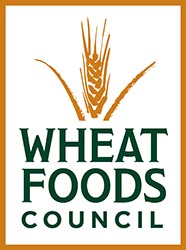A vegetarian eating pattern can be a healthy option. The key is to consume a variety of foods and the right
amount of foods to meet your calorie and nutrient needs.
THINK ABOUT PROTEIN
Your protein needs can easily be met by eating a variety of plant foods. Sources of protein for vegetarians include beans and peas, nuts, and soy products
(such as tofu, tempeh). Lacto-ovo vegetarians also get protein from eggs and dairy foods.
BONE UP ON SOURCES OF CALCIUM
Calcium is used for building bones and teeth. Some vegetarians consume dairy products, which are excellent sources of calcium. Other sources of calcium
for vegetarians include calcium-fortified soymilk (soy beverage), tofu made with calcium sulfate, calciumfortified breakfast cereals and orange juice, and some
dark-green leafy vegetables (collard, turnip, and mustard greens; and bok choy).
MAKE SIMPLE CHANGES
Many popular main dishes are or can be vegetarian — such as pasta primavera, pasta with marinara or pesto sauce, veggie pizza, vegetable lasagna, tofuvegetable stir-fry, and bean burritos.
ENJOY A COOKOUT
For barbecues, try veggie or soy burgers, soy hot dogs, marinated tofu or tempeh, and fruit kabobs. Grilled veggies are great, too!
INCLUDE BEANS AND PEAS
Because of their high nutrient content, consuming beans and peas is recommended for everyone, vegetarians and non-vegetarians alike. Enjoy some vegetarian chili, three bean salad, or split pea soup.
Make a hummus filled pita sandwich.
TRY DIFFERENT VEGGIE VERSIONS
A variety of vegetarian products look — and may taste — like their non-vegetarian counterparts but are usually lower in saturated fat and contain no cholesterol. For breakfast, try soy-based sausage patties
or links. For dinner, rather than hamburgers, try bean burgers or falafel (chickpea patties).
MAKE SOME SMALL CHANGES AT RESTAURANTS
Most restaurants can make vegetarian modifications to menu items by substituting meatless sauces or non-meat items, such as tofu and beans for meat,
and adding vegetables or pasta in place of meat. Ask about available vegetarian options.
NUTS MAKE GREAT SNACKS
Choose unsalted nuts as a snack and use them in salads or main dishes. Add almonds, walnuts, or pecans instead of cheese or meat to a green salad.
GET YOUR VITAMIN B12
Vitamin B12 is naturally found only in animal products. Vegetarians should choose fortified foods such as cereals or soy products, or take a vitamin B12 supplement if they do not consume any animal products. Check the Nutrition Facts label for vitamin B12 in fortified products.
FIND A VEGETARIAN PATTERN FOR YOU
Go to the Dietary Guidelines for Americans, 2010 page and check the appendices for vegetarian (and
vegan) adaptations of the USDA food patterns at 12 calorie levels.
Source: MyPlate, https://www.choosemyplate.gov/ten-tips-healthy-eating-for-vegetarians
